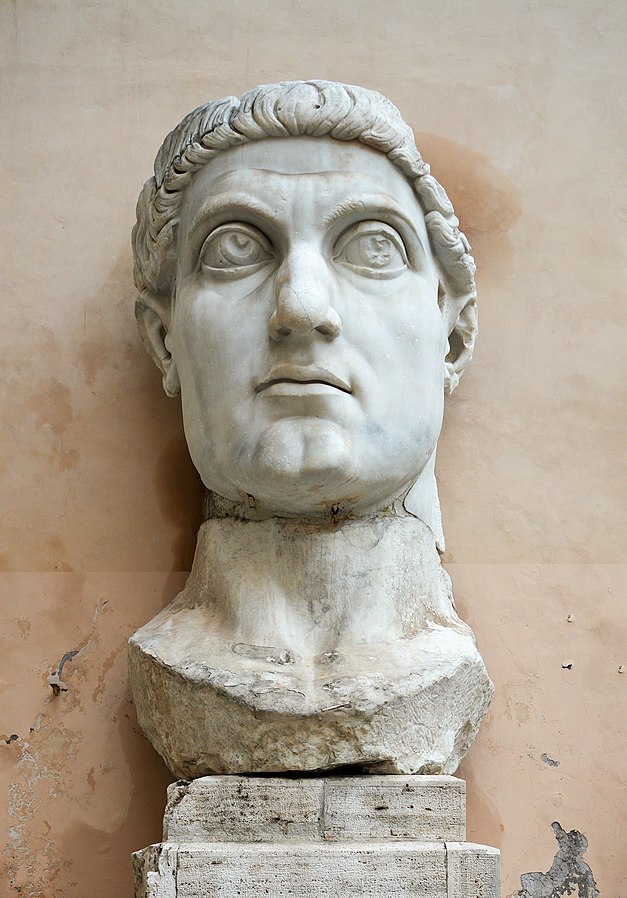When we think of the great innovators and pioneers who have shaped the technological landscape, one name that often gets overlooked is that of Constantine the Great. However, this 4th century Roman emperor's impact on the world of science, engineering, and communication was nothing short of transformative.
Ascending to the imperial throne in 306 AD, Constantine oversaw a period of immense change and progress that would echo through the centuries. But long before he became the sole ruler of the Roman Empire, he demonstrated an insatiable thirst for knowledge and a penchant for problem-solving that set him apart from his contemporaries.
As a young military commander, Constantine earned a reputation for his shrewd tactical thinking and ability to devise new battlefield technologies. He recognized the value of communication networks, investing heavily in road systems and postal infrastructure that allowed information and resources to flow more efficiently across the expanding empire. This set the stage for advancements in trade, governance, and scientific exchange.
Once Constantine solidified his power, he utilized his position to champion new ideas and remove barriers to innovation. He encouraged advancements in civil engineering, hydraulics, and metallurgy, while also providing newfound freedoms and support for the study of natural philosophy - the precursor to modern science.
Just as importantly, Constantine understood the importance of promoting these accomplishments and sharing them with the wider world. Through his patronage of chroniclers and his own remarkable communication skills, he ensured that the era's technological breakthroughs were widely documented and disseminated.
In the centuries since his reign, the echoes of Constantine's impact can still be heard. From the road networks that became the backbones of continental trade, to the foundations of civil and religious authority he helped establish - his legacy continues to shape our world. Join us as we explore the remarkable life and times of one of history's most influential technological pioneers.

The Roman emperor, Flavius Valerius Aurelius Constantinus, or Constantine I, was born at Naissus, in Upper Moesia. He was the eldest son of Constantinus Chlorus and Helena, and first distinguished himself as a soldier in Diocletian's Egyptian expedition (296), and then under Galerius in the Persian war.
In 305 the two emperors Diocletian and Maximian abdicated, and were succeeded by Constantine Chlorus and Galerius. Constantine joined his father, who ruled in the west, at Boulogne on the expedition against the Picts, and before Constantinus died (306) he proclaimed his son his successor. Galerius did not wish to quarrel with Constantine, yet he granted him the title of Caesar only, refusing that of Augustus. Political complications now increased, until in 308 there were actually no less than six emperors at once - Galerius, Licinius and Maximin in the east, and Maximian, Maxentius his son, and Constantine in the west. Maxentius drove his father from Rome and Maximian committed suicide (309). Maxentius threatened Gaul with a large army. Constantine, crossing the Alps by Mont Cénis, defeated Maxentius, who was drowned after the last great victory at the Milvian Bridge near Rome (312).
Before the battle a flaming cross inscribed "In this conquer" was said to have caused Constantine's conversion to Christianity. In 313, the edict of Milan, issued conjointly with Licinius, gave civil rights and toleration to Christians throughout the empire. Constantine was now sole emperor of the west; and by the death of Galerius in 311 and of Maximin in 313, Licinius became sole emperor of the east. After a war (314) between the two rulers, Licinius had to cede Illyricum, Pannonia and Greece, and Constantine for the next nine years devoted himself to the correction of abuses, the strengthening of his frontiers and the chastising of the barbarians.
The first Christian emperor of the Roman Empire. More information about the life and reign of Constantine the Great in a video.
Having in 323 again defeated Licinius, and put him to death, Constantine was now sole ruler of the Roman world. He chose the ancient Greek city of Byzantium for his capital, and in 330 inaugurated it under the name Constantinople. Christianity became a state religion in 324 although paganism was not persecuted. In 325 was held the great Church Council of Nicaea, in which the court sided against the Arians.
Yet it was only shortly before his death that Constantine received baptism. The story of his baptism at Rome by Pope Sylvester in 326, and of the so-called Donation of Constantine, long treated as an argument and justification for the temporal power of the papacy, is completely unhistorical. His later years were stained with bloodshed, especially the execution of his eldest son Crispus (326) for treason and of his own second wife Fausta (327) on some similar charge.
He proposed to divide the empire between his three sons by Fausta - Constantius, Constantine and Constans - but in 340 Constantine II lost his life in war with Constans. Constantine the Great died May 22, 337.